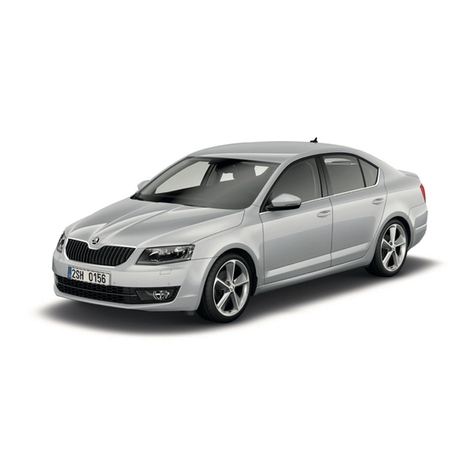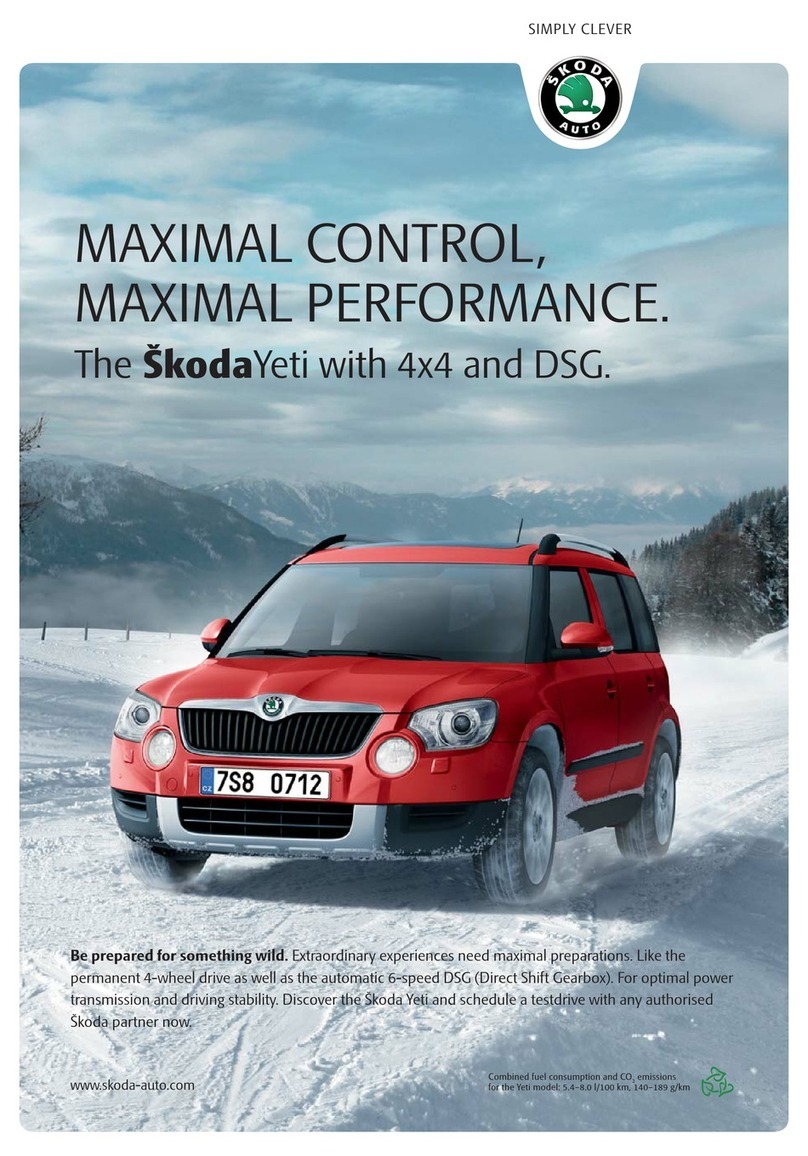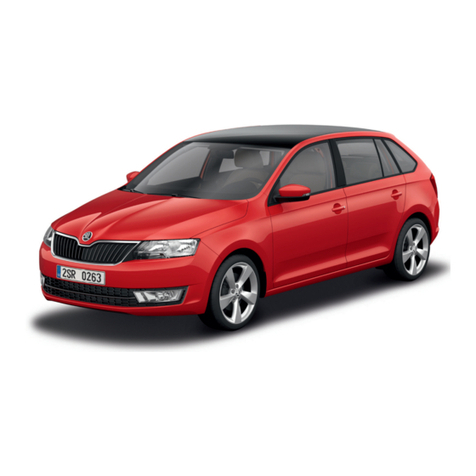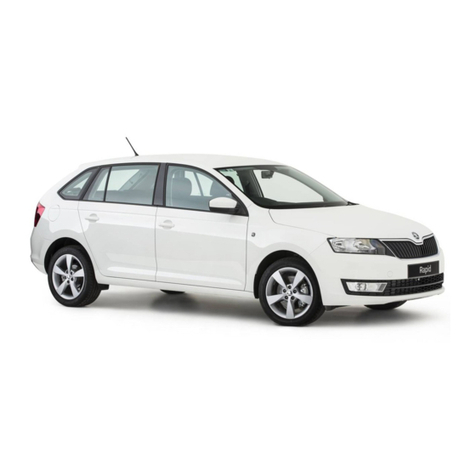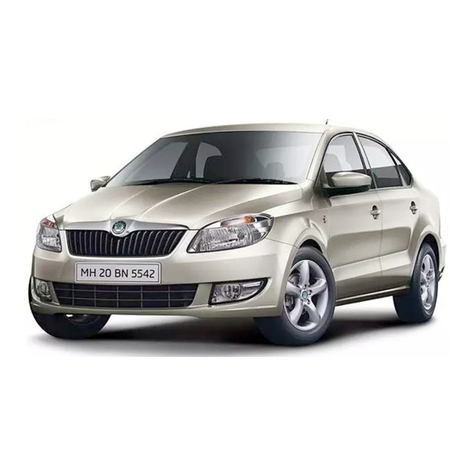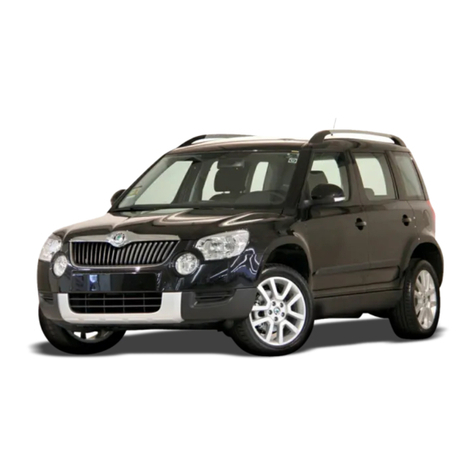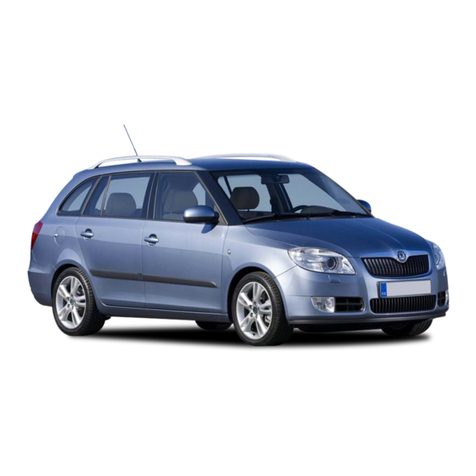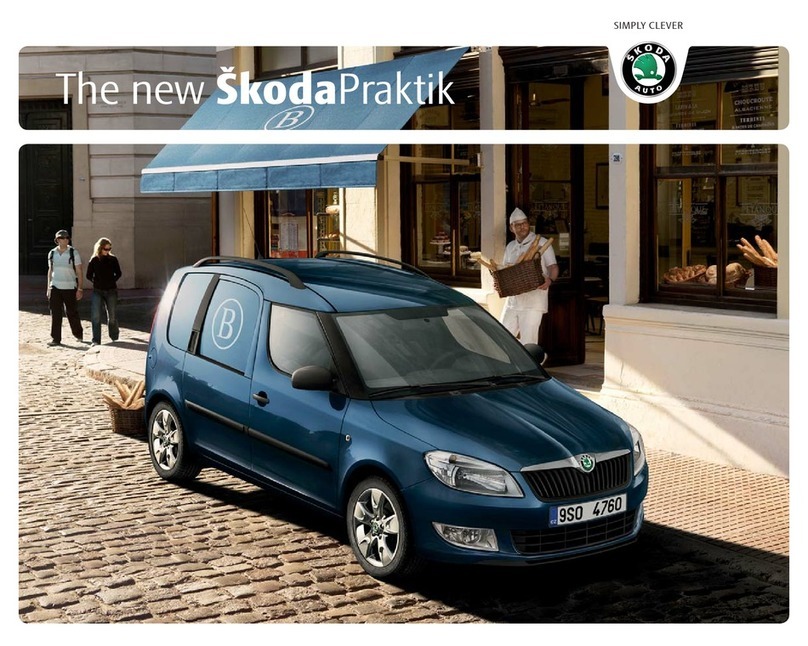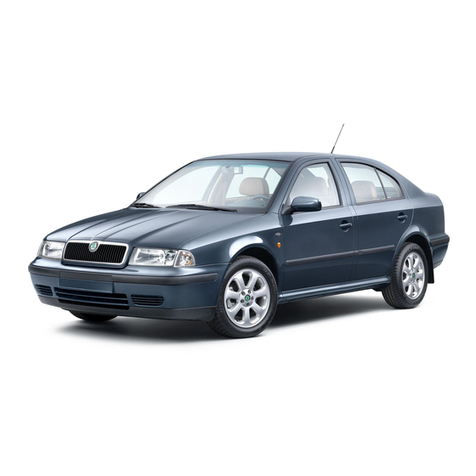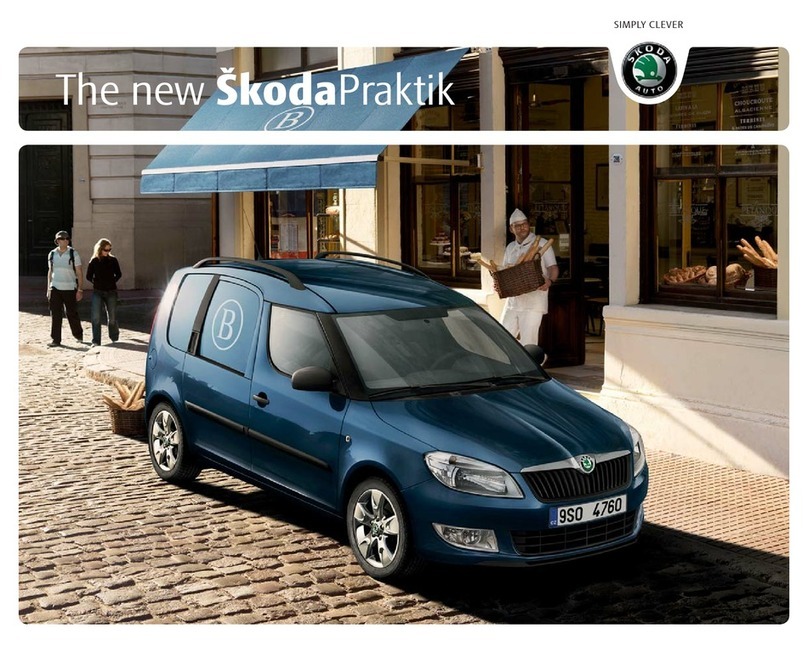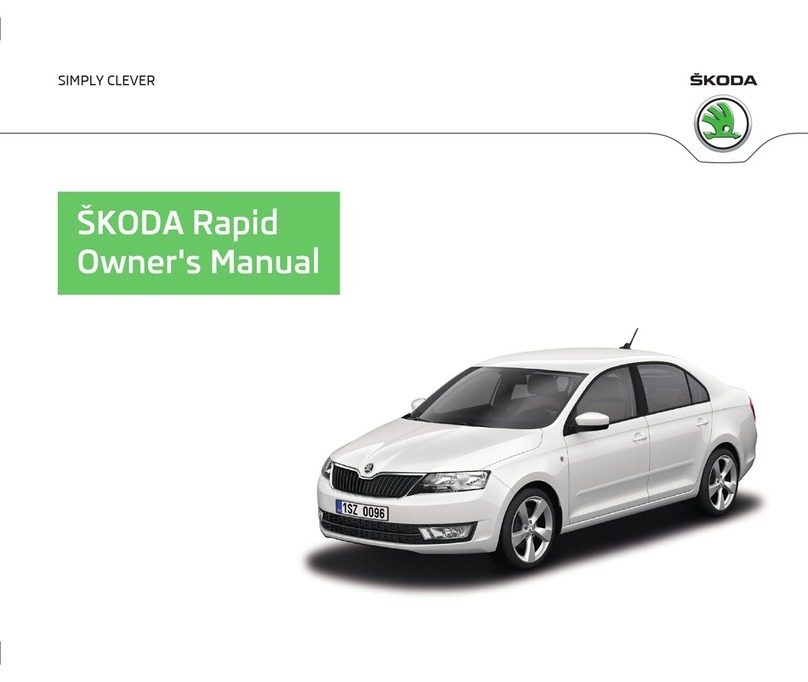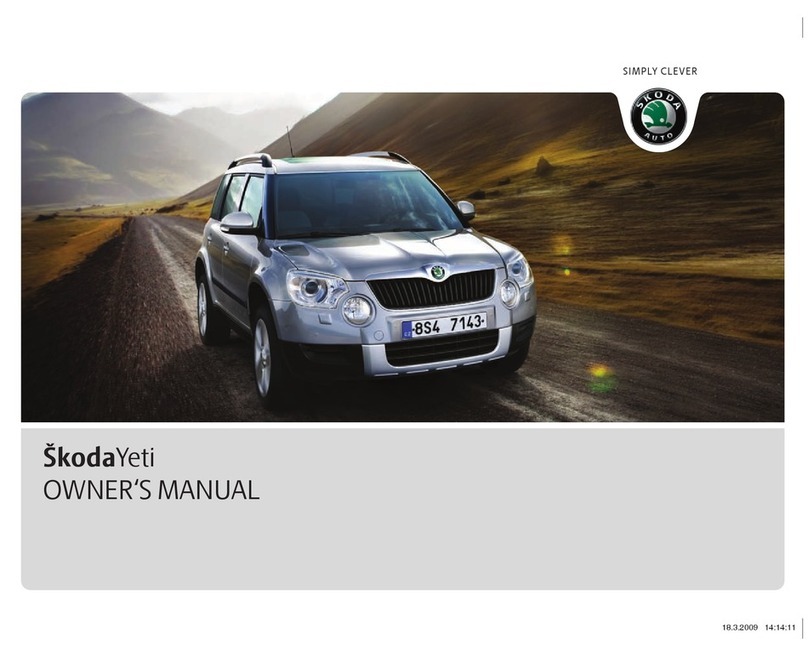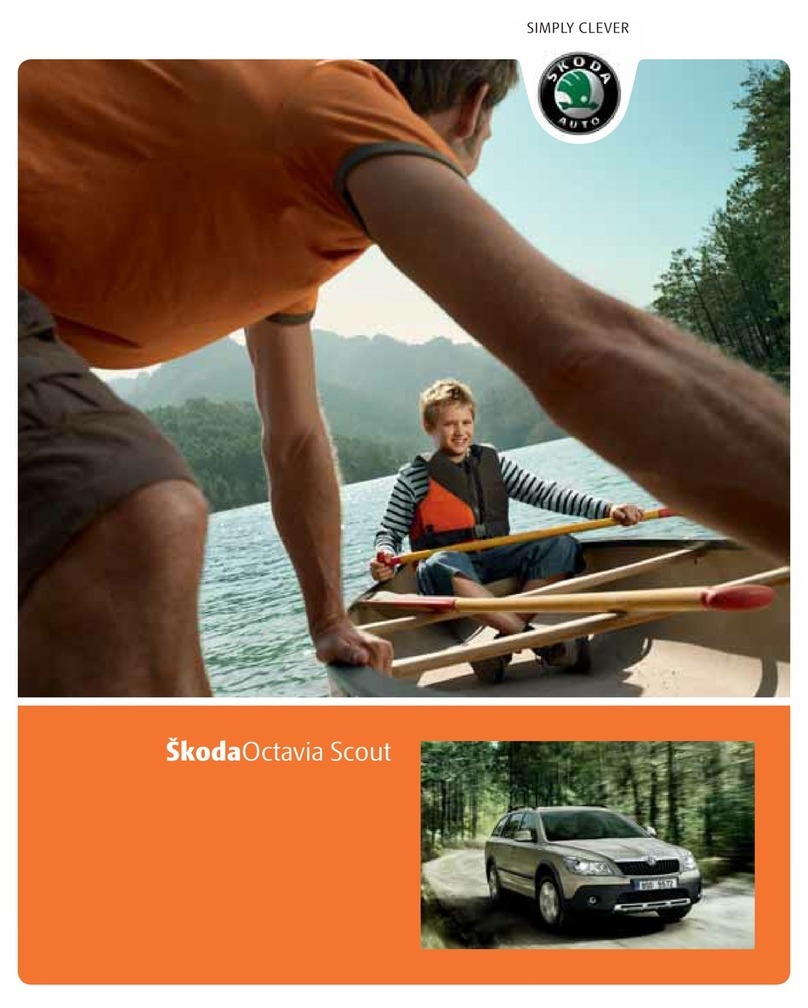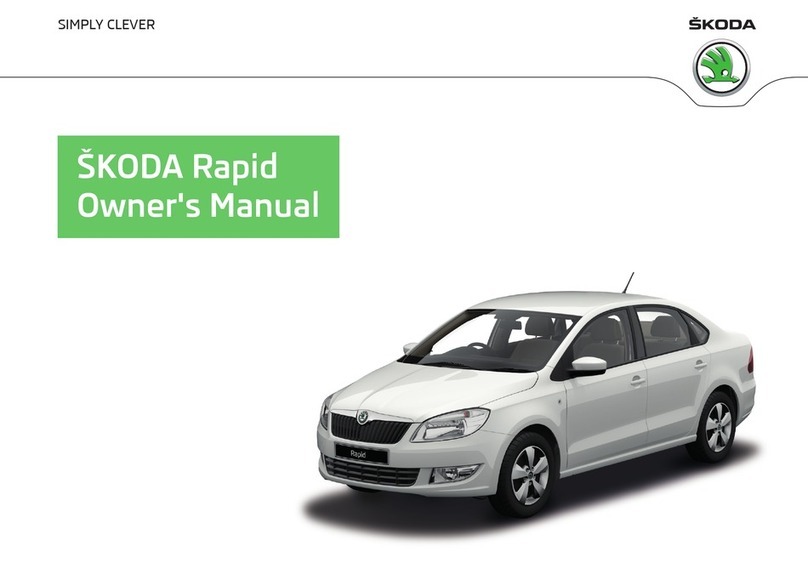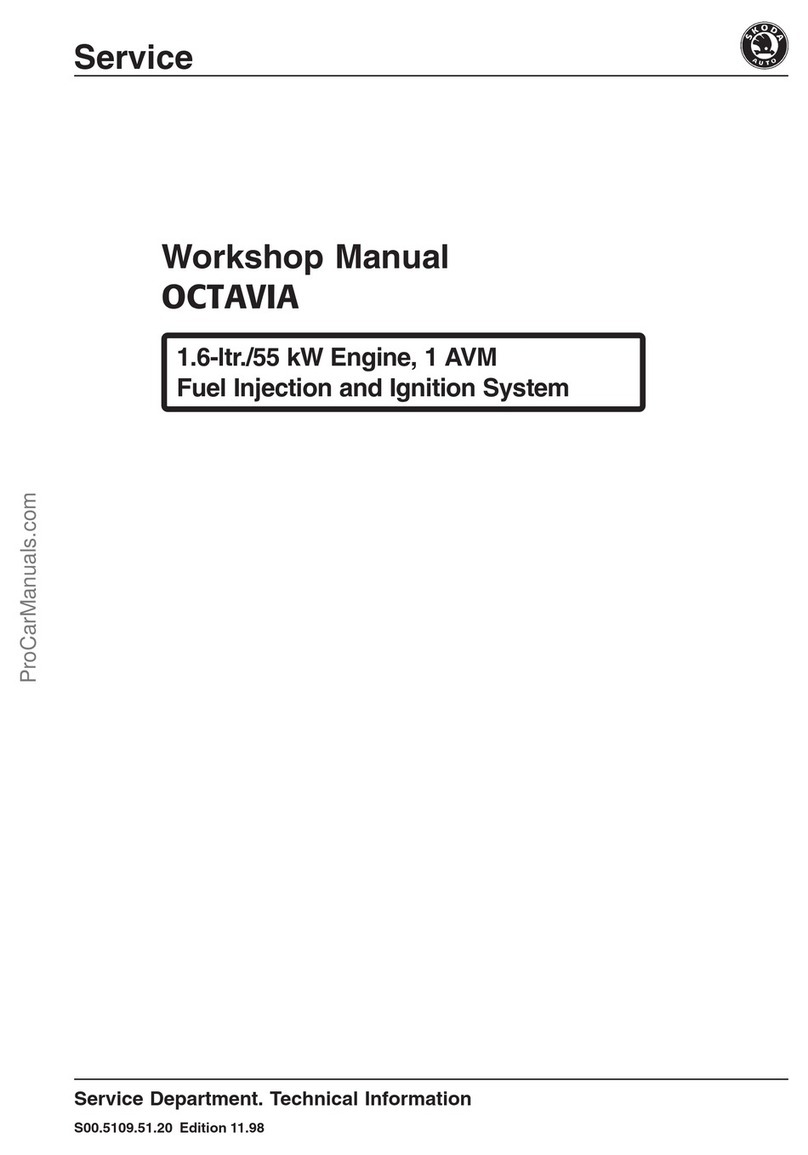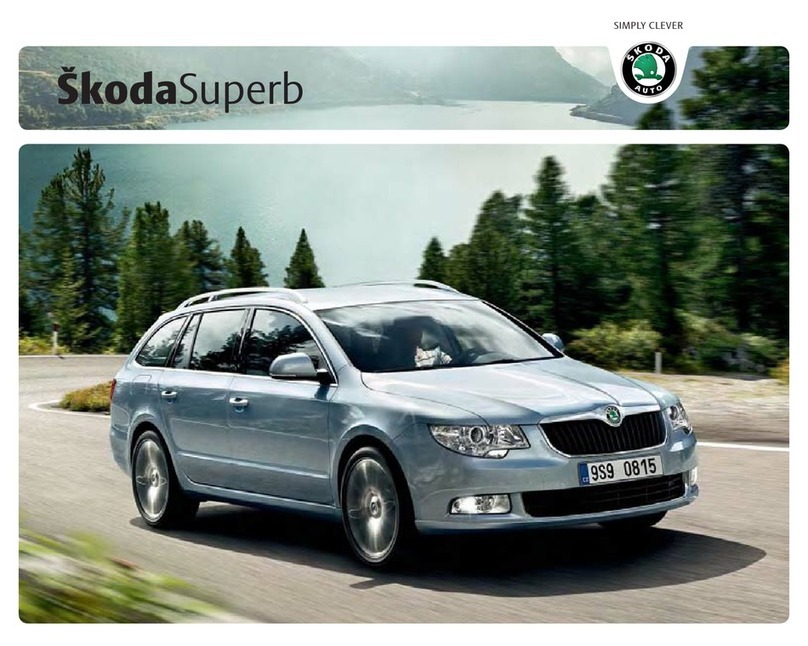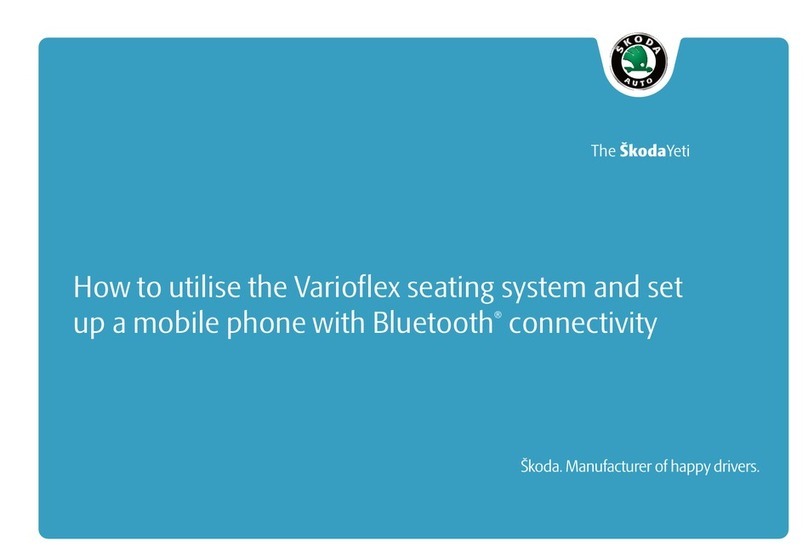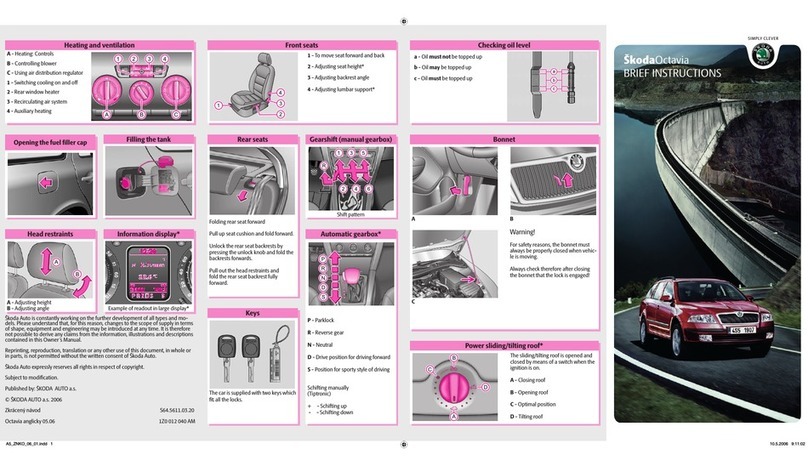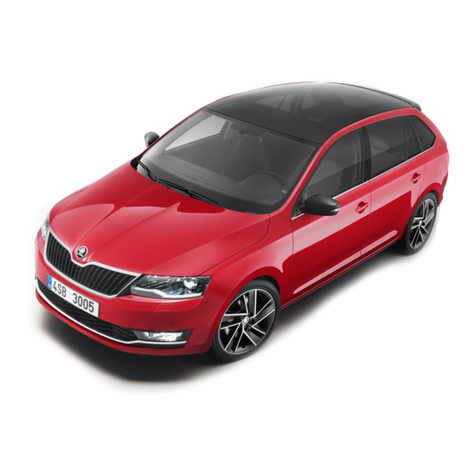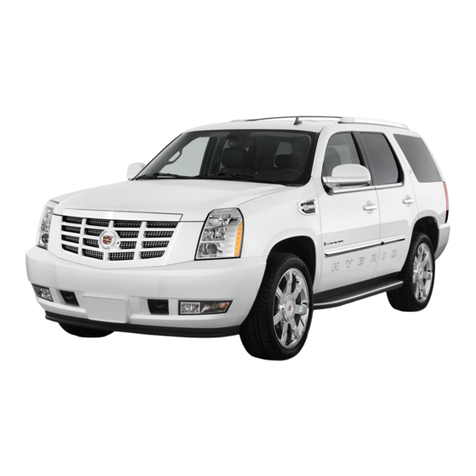1
3
2
4
5
Factory Fitted Optional Equipment
Available on all models Basic VAT RRP
Electric slide and tilt sunroof (not available on GreenLine) £513.04 £76.96 £590.00
Electric sliding solar sunroof (not available on GreenLine) £682.61 £102.39 £785.00
Floor mats £43.48 £6.52 £50.00
Full size steel wheel or space saver spare wheel*
(not available on GreenLine) £52.17 £7.83 £60.00
Heated windscreen (available in conjunction with
the 3.6 V6, 1.8 TSI, 2.0 TDI CR only) £200.00 £30.00 £230.00
MDI (Mobile Device Interface) -
(requires additional adapter see page 10) £130.43 £14.57 £150.00
Metallic paint £347.83 £52.17 £400.00
Net in boot £65.22 £9.78 £75.00
Rear side airbags £213.04 £31.96 £245.00
Smoking pack £26.09 £3.91 £30.00
Sunset glass from b-pillar back (standard on GreenLine) £178.26 £26.74 £205.00
Towbar preparation (not available on GreenLine)*** £113.04 £16.96 £130.00
Variable boot floor (not available on GreenLine) £139.13 £20.87 £160.00
Available on S models
3-Spoke leather steering wheel
with leather gearknob and gaiter £213.04 £31.96 £245.00
4-Spoke leather steering wheel with leather
gearknob and gaiter £213.04 £31.96 £245.00
4-Spokemulti-function steering wheel for radio and
telephone with leather gearknob and gaiter
+Telephone preparation with Bluetooth® GSM III
(UHV + rSAP) and Maxi-dot £739.13 £110.87 £850.00
4-Spoke multi-function steering wheel for radio with
leather gearknob and gaiter £317.39 £47.61 £365.00
17” ‘Callisto’ alloys 7.5J x 17” £530.43 £79.57 £610.00
17” ‘Trifid’ alloys 7.5J x 17” £530.43 £79.57 £610.00
Acoustic front and rear parking sensors£495.65 £74.35 £570.00
Acoustic rear parking sensors £256.52 £38.48 £295.00
‘Bolero’ touchscreen stereo with integrated CD changer
(6CD) with MP3 and SD card £256.52 £38.48 £295.00
CD changer (6CD) £278.26 £41.74 £320.00
Cruise control £160.87 £24.13 £185.00
Dual-zone air conditioning £404.35 £60.65 £465.00
Heated front seats £147.83 £22.17 £170.00
Heated front and rear seats (separately controlled) £278.26 £41.74 £320.00
Hill hold control (for ESP) and TPM (Tyre Pressure Monitor) £130.43 £19.57 £150.00
Integrated front headlight washers £113.04 £16.96 £130.00
Maxi-dot trip computer £104.35 £15.65 £120.00
Park Assist (front & rear parking sensors and Maxi-dot) £608.70 £91.30 £700.00
Rain sensor £130.43 £19.57 £150.00
Rear and rear side window sunscreens (manually operated) £173.91 £26.09 £200.00
Rear side window sunscreens (manually operated) £108.70 £16.30 £125.00
Rear window sunscreen (manually operated) £86.96 £13.04 £100.00
TPM (TyrePressure Monitor) £86.96 £13.04 £100.00
Available on GreenLine models
3-Spokeleather steering wheel with leather
gearknob and gaiter FOC FOC FOC
4-spokemulti-function steering wheel for radio with
leather gearknob and gaiter, and Maxi-Dot trip computer £208.70 £31.30 £240.00
4-Spokemulti-function steering wheel for radio
and telephone with leather gearknob and gaiter
+ Telephone preparation with Bluetooth® GSM III
(UHV + rSAP) and Maxi-dot £421.74 £63.26 £485.00
Acoustic front and rear parking sensors £495.65 £74.35 £570.00
Acoustic rear parking sensors£256.52 £38.48 £295.00
Bi-xenon headlights with AFS, integrated headlight
washers and rain sensor £695.65 £104.35 £800.00
‘Bolero’ touchscreen stereo with integrated CD changer
(6CD) with MP3 and SD card£256.52 £38.48 £295.00
*Dependant on trim and optional wheel fitted. Please consult your Retailer for details.
** TMC (Traffic Message Channel) - alerts the driver to traffic problems on major roads and enables optional re-routing.
*** Provides a single electrics solution - unsuitable for split charging.
